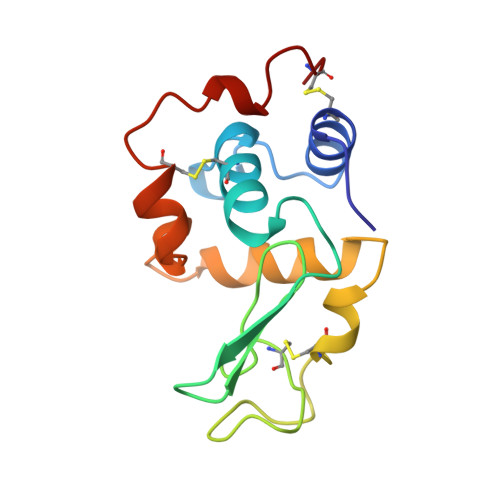A role of PDI in the reductive cleavage of mixed disulfides.
Nakamura, S., Matsushima, M., Song, H., Kikuchi, M.(1996) J Biochem 120: 525-530
- PubMed: 8902616
- DOI: https://doi.org/10.1093/oxfordjournals.jbchem.a021445
- Primary Citation of Related Structures:
207L, 208L - PubMed Abstract:
We previously reported that protein disulfide isomerase (PDI) can dissociate the glutathione molecule in vitro from the mutant human lysozyme (hLZM) C77A-a, which is modified with glutathione at Cys95; however, it seems structurally difficult for PDI to attack either the disulfide bond or the side chain of the cysteine residue of a mixed disulfide. To investigate the function of PDI, we introduced several glutathione and cysteine derivatives at Cys95, instead of the glutathione of C77A-a. Using thiol compounds modified by 5,5'-dithiobis(2-nitrobenzoic acid) (DTNB), we could easily modify the free thiol group of C77A-b (C77A with no glutathionylation), without denaturation. For all of the modifications we tested, a negative correlation was found between the initial rate and the acceleration ratio of the reductive cleavage of mixed disulfides with PDI. A mutant PDI (hPDIM), which has no thiol-disulfide exchange activity, suppressed the reductive cleavage of the mixed disulfide of C77A-a with hPDI, suggesting that hPDI non-covalently interacted with the substrates. Taking account of the results of the structural analysis, we conclude that one of the functions of PDI in vivo lies in relaxing the structure around the disulfide bond, as well as in exchanging the thiol-disulfide bonds.
Organizational Affiliation:
Protein Engineering Research Institute, Osaka.















